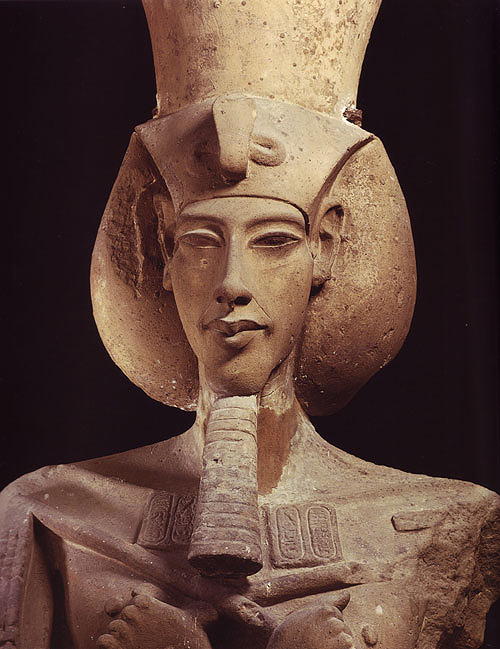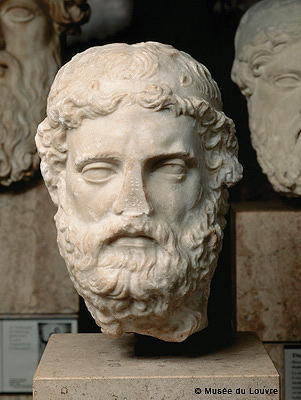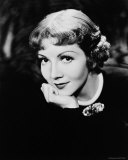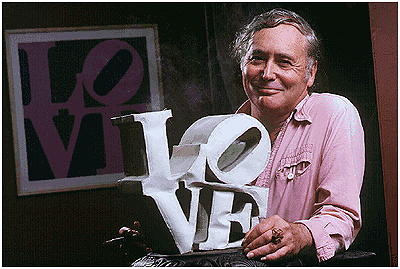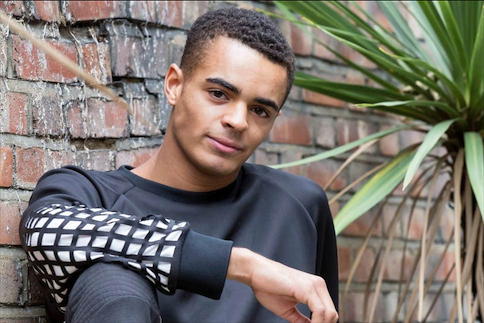|
presents THIS DAY IN GAY HISTORY based on: The White Crane Institute's 'Gay Wisdom', Gay Birthdays, Gay For Today, Famous GLBT, glbt-Gay Encylopedia, Today in Gay History, Wikipedia, and more …
Collected by Ted September 13 [{(o)}]|[{(o)}]|[{(o)}]|[{(o)}]| [{(o)}]|[{(o)}]
c.1350 BC – Pharoah Akhenaten, husband of Queen Nefertiti, may also have had a male lover - his younger general, Smenkhare, who later became pharoah himself. After the discovery in 1922 of the tomb of Tutankhamen (a child of unknown relationship to Akhenaten), Percy Newberry noted that objects had been taken from Smenkhkare's burial chamber to increase the treasure in Tutankhamen's tomb; and among these was a box inscribed on its knobs with "Smenkhkare beloved of Akhenaten" and "Akhenaten beloved of Smenkhkare." Newberry in his article (1928) also drew attention to a small private stele (upright stone slab) in the Berlin Museum, originally made for a military officer, which showed two kings (identified by their crowns, one the double crown of Upper and Lower Egypt and the other a war crown), nude and sitting side by side. Although the piece is unfinished, with its cartouches blank (ovals which usually contained names), the figures seemed easily identified as Akhenaten and Smenkhkare, the former caressing the youth's chin while Smenkhkare rests his arm around the older king's shoulder. Two other pieces then also came to mind, a relief of a similar youth pouring wine into Akhenaten's cup (Berlin Museum) and a sculptor's trial piece of Akhenaten kissing a child seated on his lap (Egyptian Museum, Cairo) - and some scholars pondered whether these pairs might also include Smenkhkare. (Actually the former conveys no sexual meaning, and the child in the latter seems very young.) Subsequently, Egyptologists battled over Akhenaten's sexual biology and orientation. For example, Donald Redford, a Canadian archaeologist, wrote (1984) that he personally disliked "this effete monarch, who could never hunt or do battle," while Cyril Aldred, Keeper of Art and Archaeology at the Royal Scottish Museum in Edinburgh, saw (1968) "homosexual relations between the elder and the younger monarch" pictured on the Berlin stele, taking into account also the same-sex "beloved" titles, and the disappearance of Nefertiti's name from all records near the end of Akhenaten's reign.
c.570 BC – Anacreon, born in Teos, Ionia was one of the nine Lyric Poets of the golden age of Greek poetry. And being the good and manly Greek he was, Anacreon's poems and odes were largely about the beautiful boys he loved or longed for or held in his arms as he cooed lyrical poetry to them. He kisses and tells; he names names: Smerdis, Leukapsis, Smialus, Eurylus and Bathylus, are among the youths he sings to. From his erotic verse there survive striking images of his beloved young men: the peaceful character of Megistes, the eyes of Cleobulus, the blond locks of the Thracian Smerdis. Anacreon's poetic sentiments and style were widely imitated by Hellenistic and Byzantine Greek writers, though they tended to exaggerate the strain of drunken eroticism and frivolity present in his work. The structure of his poesy was so popular in its own time that others imitated the eponymously named "Anacreontics." Anacreon was rediscovered by English poets int he 19th century and they swooned for him like a well-oiled boy in the gymnasium. The vogue for Anacreontics in English culminated in the popular song "To Anacreon in Heaven." In 1814, Francis Scott Key wrote "The Star Spangled Banner" on this day, based on the then popular "To Anacreon in Heaven."
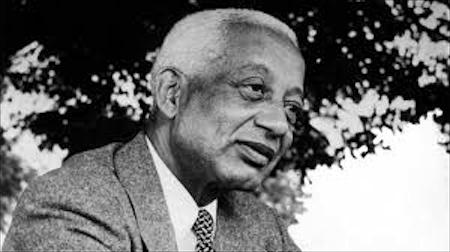
1885 – Alain Leroy Locke (d.1954) was an American writer, philosopher, educator, and patron of the arts. Distinguished in 1907 as the first African-American Rhodes Scholar, Locke became known as the philosophical architect —the acknowledged "Dean"— of the Harlem Renaissance. He is frequently included in listings of influential African Americans. On March 19, 1968, the Rev. Dr. Martin Luther King, Jr. proclaimed: "We're going to let our children know that the only philosophers that lived were not Plato and Aristotle, but W. E. B. Du Bois and Alain Locke came through the universe." He was born Arthur Leroy Locke in Philadelphia, Pennsylvania, on September 13, 1885 to parents both of whom were descended from prominent families of free blacks. Called "Roy" as a boy, he was their only child. His father was the first black employee of the U.S. Postal Service, and his paternal grandfather taught at Philadelphia's Institute for Colored Youth. His mother Mary was a teacher and inspired Locke's passion for education and literature. Mary's grandfather, Charles Shorter, fought as a soldier and was a hero in the War of 1812. In 1907, Locke graduated from Harvard University with degrees in English and philosophy; he was honored as a member of the Phi Beta Kappa Society and recipient of the Bowdoin prize. That year he was the first African American to be selected as a Rhodes Scholar. Locke joined Howard University as the chair of the department of philosophy. During this period, he began teaching the first classes on race relations. After working to gain equal pay for African-American and white faculty at the university, he was dismissed in 1925. Following the appointment in 1926 of Mordecai W. Johnson, the first African-American president of Howard, Locke was reinstated in 1928 at the university. Beginning in 1935, he returned to philosophy as a topic of his writing. He continued to teach generations of students at Howard until he retired in 1953. Locke Hall, on the Howard campus, is named in his honor. In addition to teaching philosophy, Locke promoted African-American artists, writers, and musicians. He encouraged them to explore Africa and its many cultures as inspiration for their works. He encouraged them to depict African and African-American subjects, and to draw on their history for subject material. Locke was homosexual, and may have encouraged and supported other gay African Americans who were part of the Harlem Renaissance. Given the discriminatory laws against it, he was not fully open about his orientation. He referred to it as a point of "vulnerable/invulnerability", representing an area of both risk and strength.
1903 – Claudette Colbert, French-born actress born (d.1996) Long rumored to have been one of Marlene Dietrich's many lovers, most of Colbert's estate, estimated at $3.5 million and including her Manhattan apartment and villa in Barbados,was left to a friend, Helen O'Hagan (1931—), a retired director of corporate relations at Saks Fifth Avenue, whom Colbert had met in 1961 on the set of the actress's last film.
1928 – Robert Indiana, best known as the creator of the LOVE series of paintings and sculptures, is an openly gay American artist who has incorporated autobiographical and gay themes within his work. Indiana was born on September 13, 1928. Oil company manager Earl Clark and homemaker Carmen Watters of New Castle, Indiana, adopted the infant as their only child. Clark attended local schools before studying Russian at Syracuse University. He served in the U.S. Army Air Corps from 1946 to 1949 and then entered the Art Institute of Chicago with the assistance of the GI Bill. He won a scholarship to the University of Edinburgh. He earned an M.F.A. there in 1954 and moved to New York City. Clark rented a loft in an old warehouse on the southernmost tip of Manhattan that became an artistic center because of its cheap rents. There he became part of a group of young artists including Agnes Martin, Lenore Tawney, Jack Youngerman, and Ellsworth Kelly. For a time, he and Kelly were lovers. Clark changed his surname to Indiana in 1958 to reflect better the American focus of his work. He first attracted notice in 1959 with unpainted assemblages, stenciled with short words and constructed from scavenged wood, pieces of iron, and wheels. Indiana is part of the pop art movement, though he deprecatingly refers to himself as a "sign painter." Like other pop artists he invests commonplace objects and familiar images with new meaning. However, his works occasionally deviate from the pop art norm by evincing intense personal and political engagement. They express concern over social issues and make pointed political statements. His painting Yield Brother (1962), for example, focuses on the peace movement while his Confederacy series (1965-66), created during the Civil Rights movement, attacks racism in four southern states. In addition, Indiana tends to be more autobiographical than other pop artists. For example, his EAT/DIE (1962) diptych focuses on the last word, "eat," spoken to him by his mother on her deathbed. The painting also evokes the diner his mother managed, which had the familiar "EAT" sign looming overhead. Indiana also collaborated with gay pop artist Andy Warhol on the 1962 short film Eat. Indiana has also been influenced by the great American queer writers Walt Whitman, Herman Melville, and Hart Crane. His Melville Tryptich (1961) is considered one of his classic images, and several paintings have been inspired by Crane's poem of longing and gay affiliation, "The Bridge." In 1964, Indiana received a commission from the Museum of Modern Art for a Christmas card design. He created a picture that emphasized the words Love is God (1964). Typical of pop artists, Indiana serialized the image. In 1966, he exhibited a series of "love" paintings, including a definitive version featuring four red block letters completely filling the canvas against a blue and green background. Each letter fills a quarter of the picture, the L and a tilted O in the top quadrants, the V and E in the bottom quadrants. The LOVE image had an immediate impact, especially among the youth culture of the 1960s. As a painting, graphic design, and a sculpture, it has become one of the most pervasive and widely disseminated images of all time.  In 1973, the U.S. Postal Service commissioned Indiana to do a LOVE postage stamp. The resulting product became the most popular stamp ever issued by the U.S. government. In 1978, Indiana moved to Vinalhaven, Maine. Working with Vinalhaven Press, he has used the traditional printmaking media of etching and lithography to depict the solitude and isolation of his life in rural Maine. Indiana's more recent works include biographical elements of gay lives, including his own. Indiana continues to accept commissions.
1948 – Nell Carter, American actress, born (d.2003) a Tony Award-winning American singer and film, stage, and television actress. She appeared alongside Bette Davis in the 1974 stage musical Miss Moffat, based on Davis' earlier film The Corn is Green. The show closed before making it to Broadway. She broke into stardom in the musical Ain't Misbehavin, for which she won a Tony Award in 1978. She also won an Emmy for the same role in a televised performance in 1982. Additional Broadway credits included Dude and Annie. In 1979 she had a part in the Milos Forman-directed musical film adaptation of Hair. Her famous vocal talents are showcased throughout the motion picture soundtrack. One of the more memorable moments in the film involves her rendition of the song "White Boys" where she can be seen dancing playfully as she performs the song. After her hit show Gimme a Break! began, Carter's life took a turbulent turn. She married mathematician and lumber executive George Krynicki, and converted to Judaism in 1982 (she had been born Catholic and raised Presbyterian). She attempted suicide in the early 1980s, and entered a drug detoxification facility around 1985. Her brother, Bernard, died of AIDS in 1989. In 1992, Carter had surgery to repair two aneurysms. She divorced Krynicki and married Roger Larocque the same year, divorcing Larocque the next year. Carter had three children: a daughter Tracy and two sons Daniel and Joshua. She adopted both her sons as newborns over a four month period. She attempted to adopt twice more but both adoptions fell through. In one case she brought home a child, Mary, but the birth parents demanded money before they would sign the adoption papers. In her final attempt, she allowed a young pregnant woman to move into her house with the plan to adopt the child but the mother decided to parent her child. Appearing emotional and tearful on an episode of the Sally Jessy Raphael Show, Carter explained how she went to a Liza Minnelli concert during a turbulent time of her life. Carter told Raphael how Minnelli, seeing Carter in an agonized state, ran offstage to tell her sister, Lorna Luft, to go out and take Carter backstage so that she could get some help. Minnelli and Luft helped get Carter into rehab for her cocaine problem, which she conquered. Carter died from heart disease complicated by diabetes and obesity on January 23, 2003. She was 54 years old. She is survived by her two adopted sons (Joshua and Daniel) and a daughter (Tracy), conceived during a rape in her teens, as well as by her partner Ann Kaser. Sadly, her sexuality and relationship with Kaser did not become public knowledge until after her death.
1952 – Randy Jones, born in Raleigh, North Carolina, is an American disco and pop singer and best known as the cowboy from Village People. He attended Enloe High School in Raleigh, North Carolina and graduated in 1970. While there, he was a founder of Enloe's Drama Club, which was then called "Amicus Scaena"; Latin for "friend of scene" or "friend of theatre". He then studied at North Carolina School of the Arts before moving to New York. Jones had a marriage ceremony with his boyfriend of 20 years, Will Grega, at a New York club on May 7, 2004. Although the marriage is not legally binding, as gay marriage was still illegal in New York state, Jones commented that: "It's only a matter of time before the courts rule in favor of what's morally right and humanly decent." The pair published a book together in 1996, titled Out Sounds: The Gay and Lesbian Music Alternative. He released in 2007 a disco and pop solo album Ticket to the World. In 2009, he appeared on Flight of the Conchords in their music video for "Too Many Dicks".
1994 – Layton Williams is an English stage actor, best known as one of the boys who played the title role in Billy Elliot the Musical at the Victoria Palace Theatre in London's West End, and as the character Kylie in the BBC TV series Beautiful People 2008 and 2009. From late 2016, he began playing Angel in the 20th anniversary tour of Rent around the UK. The production, particularly himself, received rave reviews. After several months of training at the Billy Elliot Academy in Leeds, Williams debuted in Billy Elliot the Musical on 26 February 2007. His training was documented on The Paul O'Grady Show in which he appeared in on 25 May 2007 and then in several morning TV shows, TV interviews, and short clips related to the musical. He is the second non-Caucasian boy, the other being Matthew Koon, and the first mixed race youth to star in the show. He gave his finale performance in the musical on 29 November 2008; Williams is still the second-longest running performer as 'Billy' in the show's history. On 31 January 2009, 2 months after his final performance, Layton appeared on the programme Feelgood Factor on ITV, where he and two other 'Billy' actors, Tanner Pflueger and Tom Holland, performed a specially choreographed version of Angry Dance from Billy Elliot the Musical. Williams has studied street dance and drama at Carol Godby's Theatre workshop in Bury, Greater Manchester. He also studied ballet at Centre Pointe, Manchester. Williams was awarded a scholarship to Sylvia Young Theatre School in Marylebone, London and stayed there until 2008. He attended Broad Oak High School in Bury, his home town, but now attends the Italia Conti Academy of Theatre Arts. During his time at the Italia Conti Academy of Theatre Arts Williams was featured in a children's documentary 'School for Stars' which was broadcast on the children's television channel CBBC. He was offered the part as young Michael Jackson in the West End Musical Thriller Live where he did a few performances before he outgrew the role. Williams became well known to a TV audience as the character Kylie – acting, dancing, and singing – in the 2008 and 2009 BBC Two comedy Beautiful People, series 1 and 2. Since 2012 he has played Stephen Carmichael in the BBC Comedy Bad Education. Following that he performed the part of Duane in Hairspray the Musical 2015 - 2016 tour. He has just announced that will will also be in the new 20th anniversary cast of Rent which begins touring in October 2016. Layton is a strong supporter of the charities Stonewall and Ditch the Label. Williams is openly gay. His grandparents are from Jamaica, but his father was born in the UK.
2001 – On Pat Robertson’s 700 Club, Jerry Falwell says feminists and gays and lesbians were responsible for the 9/11 attacks.
[{(o)}]|[{(o)}]|[{(o)}]|[{(o)}]| [{(o)}]|[{(o)}] |
